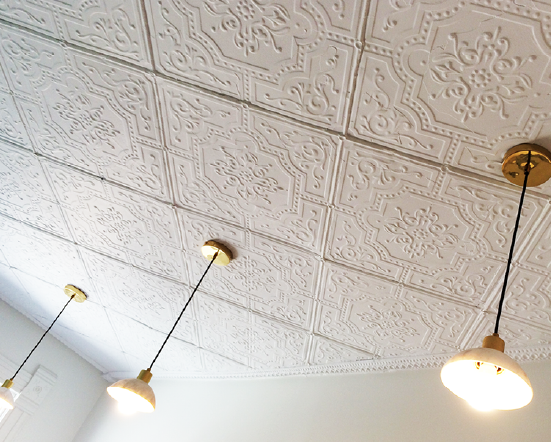Choosing between a drop ceiling (also known as a suspended ceiling) and a drywall ceiling involves evaluating various factors related to functionality, aesthetics, and practicality. Here’s why you might prefer a drop ceiling over a drywall ceiling:
Accessibility to Utilities
Easy Access:
Drop ceilings provide easy access to the space above, where HVAC systems, plumbing, and electrical wiring are often installed. This accessibility makes it simpler to perform maintenance or repairs without disrupting the main ceiling.
Convenient Upgrades:
Changes or upgrades to the systems above the ceiling can be done with minimal effort, as tiles can be removed and replaced easily.
Cost-Effectiveness
Lower Installation Costs:
Drop ceilings can be less expensive to install than drywall ceilings, particularly in spaces where access to utilities is a consideration. The installation process is generally quicker and less labor-intensive.
Reduced Repair Costs:
If a tile gets damaged, it can be replaced individually without the need to repair or replace the entire ceiling.
Acoustic Performance
Sound Absorption:
Drop ceilings often include acoustic tiles designed to absorb sound and reduce noise levels. This can be particularly beneficial in commercial settings where noise control is important for comfort and productivity.
Soundproofing Options:
Various tile options are available that offer different levels of soundproofing, helping to improve the acoustic environment of the space.
Flexibility and Customization
Adjustable Height:
Drop ceilings allow for adjustments in height, which can be useful for accommodating different types of lighting, fixtures, or aesthetic preferences.
Design Variety:
There are many styles and finishes available for drop ceiling tiles, including options that mimic traditional ceiling designs or offer a modern, sleek appearance.
Improved Lighting Integration
Lighting Fixtures:
Drop ceilings are compatible with a range of lighting fixtures, including recessed lights and fluorescent panels. This integration helps create a well-lit and visually appealing space.
Easy Lighting Changes:
Changing or updating lighting fixtures is straightforward with a drop ceiling, as tiles can be removed to access the lighting components.
Concealing Imperfections
Hides Flaws:
Drop ceilings can conceal imperfections in the structural ceiling, such as uneven surfaces or unsightly wiring. This provides a clean and uniform appearance without the need for extensive repairs to the existing ceiling.
Concealed Elements:
They can effectively hide ductwork, pipes, and other elements that might be less attractive if left exposed.
Thermal Insulation
Enhanced Insulation:
Certain drop ceiling tiles offer improved thermal insulation, which can help in maintaining temperature control and energy efficiency in the space.
Ease of Installation
Simpler Process:
The installation of a drop ceiling is generally more straightforward compared to drywall, especially in spaces with complex layouts or where frequent access to utilities is needed.
Minimized Drywall Dust:
Installing a drop ceiling generates less dust and mess compared to the drywall finishing process, making it a cleaner option for renovation projects.
Fire Safety
Fire-Rated Tiles:
Many drop ceiling systems include fire-rated tiles that can provide additional protection and meet building code requirements for fire safety.
Opting for a drop ceiling over a drywall ceiling offers several advantages, particularly in terms of accessibility, cost, acoustic performance, and flexibility. Drop ceilings are a practical choice for spaces where easy access to utilities is needed, where noise control is important, or where the installation process needs to be quick and efficient. They also provide various design options and can conceal imperfections, making them a versatile and functional choice for both commercial and residential applications.

